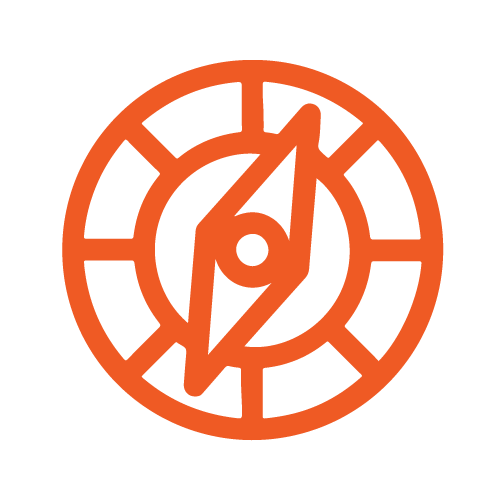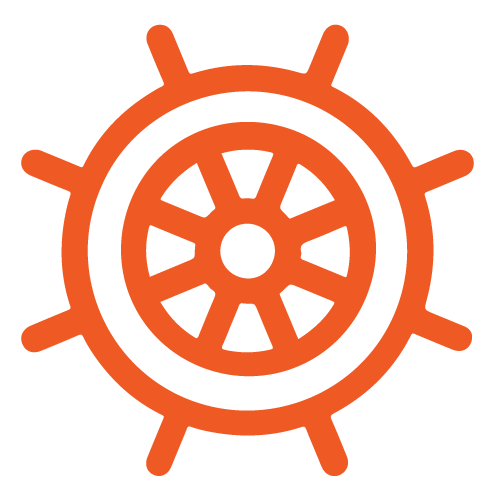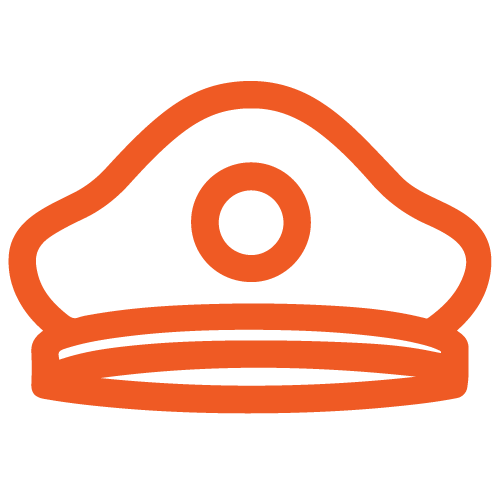- Operating your Mercury outboard at various speeds
- Allowing sufficient time for the engine warm-up and cool down
- Typical cruising speed near 3000 to 4000 rpm range
Free Shipping over $99
Orders $99 or more ship free within the contiguous U.S.
May not apply to engines or oversized orders.
Free Shipping over $99
Orders $99 or more ship free within the contiguous U.S.
May not apply to engines or oversized orders.
PartsVu Blue Rewards
Earn up to 1.5 points for every $1 spent. That’s up to 4.5% back that you can redeem and save on future orders. Excludes engine sales.
PartsVu Blue Rewards
Earn up to 1.5 points for every $1 spent. That’s up to 4.5% back that you can redeem and save on future orders. Excludes engine sales.
Ready To Serve
Our top priority is your ultimate satisfaction, and to get you back to boating as soon as possible.
Ready To Serve
Our top priority is your ultimate satisfaction, and to get you back to boating as soon as possible.

| ITEM | ACTION(S) |
|---|---|
| Lanyard Stop Switch | Check |
| Transom Tightness | Check |
| Steering System | Check |
| Steering Link Rod Fasteners | Check |
| Propeller Blades | Check |
| Engine Fuel Filter | Check |
| Engine Timing Setup | Check |
| Corrosion Control Anode | Check |
| Valve Clearance | Check |
| Power Trim Fluid | Check |
| Battery | Check |
| Control Cable Adjustments | Check |
| Timing Belt | Check |
| Bolts, Nuts, & Other Fasteners | Check |
| Fuel System | Inspect for Deterioration or Leaks |
| Thermostat | Inspect for Corrosion or Broken Spring |
| Grease Points | Lubricate |
| Splines on the Drive Shaft | Lubricate |
| Spark Plugs | Check/Replace |
| Engine Oil | Replace |
| Oil Filter | Replace |
| Gear Case Lubricant | Replace |
| ITEM | ACTION(S) |
|---|---|
| Water Pump Impeller | Check |
| Lanyard Stop Switch | Check |
| Transom Tightness | Check |
| Steering System | Check |
| Steering Link Rod Fasteners | Check |
| Propeller Blades | Check |
| Engine Fuel Filter | Check |
| Engine Timing Setup | Replace |
| Corrosion Control Anode | Check |
| Valve Clearance | Check |
| Power Trim Fluid | Check |
| Battery | Check |
| Control Cable Adjustments | Check |
| Timing Belt | Check |
| Bolts, Nuts, & Other Fasteners | Check |
| Fuel System | Inspect for Deterioration or Leaks |
| Thermostat | Inspect for Corrosion or Broken Spring |
| Grease Points | Lubricate |
| Splines on the Drive Shaft | Lubricate |
| Spark Plugs | Check/Replace |
| Engine Oil | Replace |
| Oil Filter | Replace |
| Gear Case Lubricant | Replace |
| ITEM |
|---|
| Check: Lanyard Stop Switch |
| Check: Transom Tightness |
| Check: Steering System |
| Check: Steering Link Rod Fasteners |
| Check: Propeller Blades |
| Check: Engine Fuel Filter |
| Check: Engine Timing Setup |
| Check: Corrosion Control Anode |
| Check: Valve Clearance |
| Check: Power Trim Fluid |
| Check: Battery |
| Check: Control Cable Adjustments |
| Check: Timing Belt |
| Check: Bolts, Nuts, & Other Fasteners |
| Inspect for Deterioration or Leaks: Fuel System |
| Inspect for Corrosion or Broken Spring: Thermostat |
| Lubricate: Grease Points |
| Lubricate: Splines on the Drive Shaft |
| Check/Replace: Spark Plugs |
| Replace: Engine Oil |
| Replace: Oil Filter |
| Replace: Gear Case Lubricant |
| ITEM |
|---|
| Check: Water Pump Impeller |
| Check: Lanyard Stop Switch |
| Check: Transom Tightness |
| Check: Steering System |
| Check: Steering Link Rod Fasteners |
| Check: Propeller Blades |
| Check: Engine Fuel Filter |
| Replace: Engine Timing Setup |
| Check: Corrosion Control Anode |
| Check: Valve Clearance |
| Check: Power Trim Fluid |
| Check: Battery |
| Check: Control Cable Adjustments |
| Check: Timing Belt |
| Check: Bolts, Nuts, & Other Fasteners |
| Inspect for Deterioration or Leaks: Fuel System |
| Inspect for Corrosion or Broken Spring: Thermostat |
| Lubricate: Grease Points |
| Lubricate: Splines on the Drive Shaft |
| Check/Replace: Spark Plugs |
| Replace: Engine Oil |
| Replace: Oil Filter |
| Replace: Gear Case Lubricant |
| ITEM | ACTION(S) |
|---|---|
| Engine Starting Condition/Noise | Check |
| Engine Idle Speed/Noise | Check |
| Fuel/Oil Leakage | Check |
| PTT Unit | Check |
| Pilot Water | Check |
| Water Inlet | Check |
| Yamaha Meter/Gauge | Check |
| Grease Points | Lubricate |
| Shift Link/Shift Cable | Check/Adjust/Replace |
| Throttle Link/Throttle Cable | Check/Adjust/Replace |
| Battery (Electrolyte Level, Terminal) | Check/Adjust/Replace |
| Cooling Water Leakage | Check/Replace |
| Fuel Filter (Can Be Disassembled) | Check/Replace |
| Fuel Line (High Pressure) | Check/Replace |
| Fuel Line (Low Pressure) | Check/Replace |
| Propeller/Propeller Nut/Cotter Pin | Check/Replace |
| Ignition Coils/Ignition Coil Leads | Check/Replace |
| Engine Start Switch/Engine Shut-Off Switch | Check/Replace |
| Wiring Harness Connections/Lead Coupler Connections | Check/Replace |
| Engine Oil | Replace |
| Gear Oil | Replace |
| ITEM | ACTION(S) |
|---|---|
| Cowling Lock Lever | Check |
| Anodes (External) | Check |
| Anodes (Cylinder Head Exhaust Passage) | Check |
| Impeller/Water Pump Housing | Check/Replace |
| Spark Plugs | Check/Replace |
| Thermostat | Check/Replace |
| Timing Belt | Check/Replace |
| Engine Oil Filter | Replace |
| Engine Starting Condition/Noise | Check |
| Engine Idle Speed/Noise | Check |
| Fuel/Oil Leakage | Check |
| PTT Unit | Check |
| Pilot Water | Check |
| Water Inlet | Check |
| Yamaha Meter/Gauge | Check |
| Grease Points | Lubricate |
| Shift Link/Shift Cable | Check/Adjust/Replace |
| Throttle Link/Throttle Cable | Check/Adjust/Replace |
| Battery (Electrolyte Level, Terminal) | Check/Adjust/Replace |
| Cooling Water Leakage | Check/Replace |
| Fuel Filter (Can Be Disassembled) | Check/Replace |
| Fuel Line (High Pressure) | Check/Replace |
| Fuel Line (Low Pressure) | Check/Replace |
| Propeller/Propeller Nut/Cotter Pin | Check/Replace |
| Ignition Coils/Ignition Coil Leads | Check/Replace |
| Engine Start Switch/Engine Shut-Off Switch | Check/Replace |
| Wiring Harness Connections/Lead Coupler Connections | Check/Replace |
| Engine Oil | Replace |
| Gear Oil | Replace |
| ITEM | ACTION(S) |
|---|---|
| Fuel Pump | Check/Replace |
| Impeller/Water Pump Housing | Replace |
| Cowling Lock Lever | Check |
| Anodes (External) | Check |
| Anodes (Cylinder Head Exhaust Passage) | Check |
| Engine Starting Condition/Noise | Check |
| Engine Idle Speed/Noise | Check |
| Fuel/Oil Leakage | Check |
| PTT Unit | Check |
| Pilot Water | Check |
| Water Inlet | Check |
| Yamaha Meter/Gauge | Check |
| Grease Points | Lubricate |
| Shift Link/Shift Cable | Check/Adjust/Replace |
| Throttle Link/Throttle Cable | Check/Adjust/Replace |
| Battery (Electrolyte Level, Terminal) | Check/Adjust/Replace |
| Spark Plugs | Check/Replace |
| Thermostat | Check/Replace |
| Timing Belt | Check/Replace |
| Cooling Water Leakage | Check/Replace |
| Fuel Filter (Can Be Disassembled) | Check/Replace |
| Fuel Line (High Pressure) | Check/Replace |
| Fuel Line (Low Pressure) | Check/Replace |
| Propeller/Propeller Nut/Cotter Pin | Check/Replace |
| Ignition Coils/Ignition Coil Leads | Check/Replace |
| Engine Start Switch/Engine Shut-Off Switch | Check/Replace |
| Wiring Harness Connections/Lead Coupler Connections | Check/Replace |
| Engine Oil Filter | Replace |
| Engine Oil | Replace |
| Gear Oil | Replace |
| ITEM | ACTION(S) |
|---|---|
| Valve Clearance | Check/Adjust |
| Anodes (Cylinder Head, Cylinder Block Thermostat Portion, Oil Cooler Cover, Exhaust Guide) | Replace |
| OCV Filter | Replace |
| Cowling Lock Lever | Check |
| Anodes (External) | Check |
| Anodes (Cylinder Head Exhaust Passage) | Check |
| Engine Starting Condition/Noise | Check |
| Engine Idle Speed/Noise | Check |
| Fuel/Oil Leakage | Check |
| PTT Unit | Check |
| Pilot Water | Check |
| Water Inlet | Check |
| Yamaha Meter/Gauge | Check |
| Grease Points | Lubricate |
| Shift Link/Shift Cable | Check/Adjust/Replace |
| Throttle Link/Throttle Cable | Check/Adjust/Replace |
| Battery (Electrolyte Level, Terminal) | Check/Adjust/Replace |
| Fuel Pump | Check/Replace |
| Impeller/Water Pump Housing | Check/Replace |
| Spark Plugs | Check/Replace |
| Thermostat | Check/Replace |
| Timing Belt | Check/Replace |
| Cooling Water Leakage | Check/Replace |
| Fuel Filter (Can Be Disassembled) | Check/Replace |
| Fuel Line (High Pressure) | Check/Replace |
| Fuel Line (Low Pressure) | Check/Replace |
| Propeller/Propeller Nut/Cotter Pin | Check/Replace |
| Ignition Coils/Ignition Coil Leads | Check/Replace |
| Engine Start Switch/Engine Shut-Off Switch | Check/Replace |
| Wiring Harness Connections/Lead Coupler Connections | Check/Replace |
| Engine Oil Filter | Replace |
| Engine Oil | Replace |
| Gear Oil | Replace |


